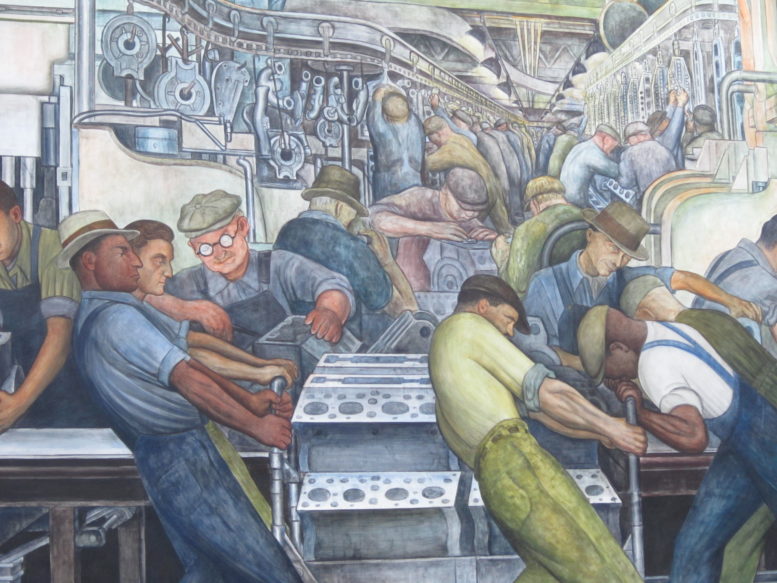Everyone who works for a living should earn enough to cover the basics and keep their family stable and healthy, no matter what job they do. But Ohio’s minimum wage falls $3,600 short of the poverty level for a family of three and is worth 28% less than the minimum wage of our grandparents’ generation.
Republicans in the General Assembly haven’t been receptive to legislation to raise the state’s wage, so a coalition of diverse stakeholders are taking matters into their own hands. Ohioans to Raise the Wage recently filed a ballot initiative to raise Ohio’s minimum wage to $13 per hour by 2025. Our latest research finds the ballot measure would benefit 1.4 million working Ohioans and half a million children.
The ballot proposal (worth $11.50 in today’s dollars) would put Ohio much closer to its historic value in 1968, which was $12 per hour in today’s dollars. Ohio voters have passed similar raises before. The initiative would raise the minimum wage by just over 32%; the last time Ohio voters raised the wage in 2006, they increased it 33%.
A five-step increase over five years means this policy would give employers more time to adjust to the change: the 2006 measure took full effect all at once in January 2008. The minimum wage is already in the Ohio Constitution. Amending it there ensures legislators cannot undo the wage increase passed by Ohio voters.
Three of the five people who would get a raise are women. Despite improvements over the past four decades, employers pay women just 84 cents on the dollar compared with men. Meanwhile, men’s wages have fallen over the same time-span. Raising the minimum wage would narrow the wage gap by lifting wages up, not pushing them down.
One in every three working women in Ohio would benefit from the minimum wage increase, along with one in five working men. Raising the minimum wage would benefit Ohioans of all races, and it would lift up black workers whose earnings have been pushed down over four decades. White people make up three out of four of the Ohioans who will get a raise if the initiative passes, but a larger share of black workers are paid low wages.
The Civil Rights Act of 1964 was supposed to level earnings opportunities for all workers, regardless of race. But decades later, in 2018, employers paid the median black worker $14.62 compared to $16.90 in 1979 (in 2018 dollars). Declines in manufacturing hurt the entire state of Ohio, but they especially harmed black workers. Since 1990, the share of white workers in manufacturing jobs fell 28%; while the share of black workers has been cut almost in half. The $13 minimum wage would benefit 40% of black Ohio workers.
Adults over the age of 20 account for nearly 87% of the workers who would benefit, some 1.26 million people. Working parents outnumber teens two to one. More than 525,000 Ohio children live in homes where at least one adult would get a raise, enabling caregivers to devote more resources, including their time, to children. Research has found that raising the minimum wage by $1 would decrease child neglect cases by nearly 10%.
Poverty is stressful, and chronic poverty is toxic. Workers who earn too little to make a living don’t live as long as the rest of us. The National Institutes of Health found that men in the top 1% lived 15 years longer than those in the bottom 1%; wealthy women lived 10 years longer than poor women. Research specifically focused on the minimum wage shows reductions in death rates from diseases that especially impact poor residents, including diabetes and stroke. A robust minimum wage can improve health for those who struggle with too little income despite the fact that they work, sometimes at two or three jobs.
No one who works for a living should struggle to support themselves and their families. For decades, workers have grown more productive and made the state wealthier than ever before. But that wealth has been captured by those at the very top. People in the 90thpercentile — those earning more than 9 out of 10 workers — got a raise of $9.12 per hour between 1979 and 2018, while wages for the bottom half of workers ranged from a loss of 25 cents to a gain of 16 cents. Ohio workers are doing their part. It’s time we do ours by making sure they’re paid fairly for it.
***
Michael Shields is a researcher with Policy Matters Ohio. His work focuses on the labor market and job quality. He writes about wages, overtime, wage theft, workers’ compensation, manufacturing, and collateral sanctions.





